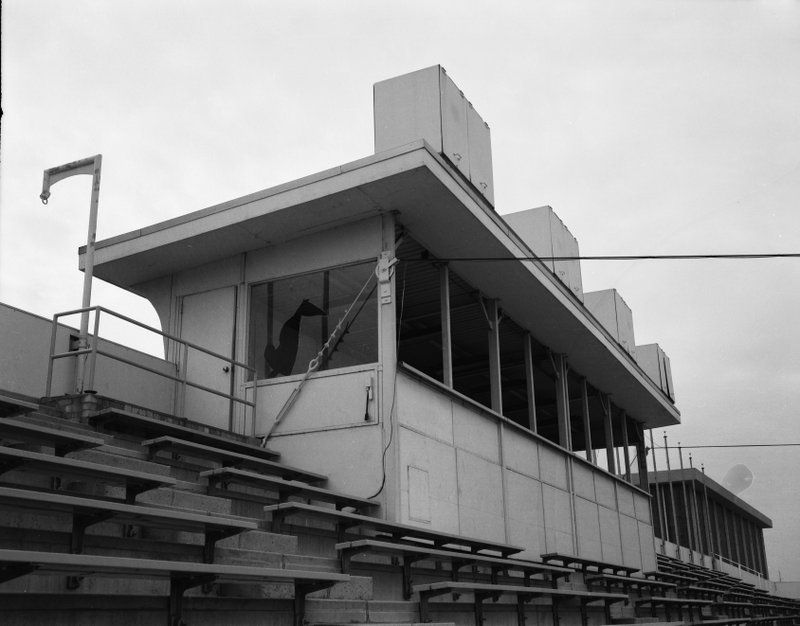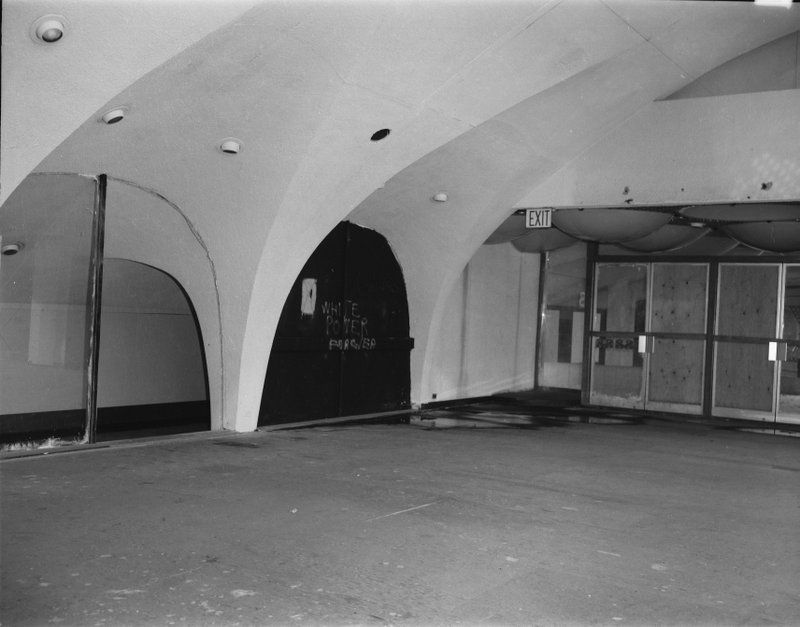Last-Minute NYC Holiday Gift Guide 🎁
We’ve created a holiday gift guide with presents for the intrepid New Yorker that should arrive just in time—

![Former US Open Stadium Was a Remnant of the 1964 World’s Fair [PHOTOS]](/content/images/size/w100/wp-content/uploads/2019/08/louis-armstrong-stadium-2009-singer-bowl-1964-worlds-fair-flushing-meadows-corona-park-louis-armstrong-stadium-us-open-usta-bilie-jean-king-national-tennis-center-queens-nyc-002.jpg)
Former Louis Armstrong Stadium in 2009. Photo by Charlie Cowins from Flickr via Wikimedia Commons
For nearly forty years, from 1978 to 2016, U.S. Open tennis fans would attend matches in Louis Armstrong Stadium, named for the jazz legend whose house museum is just nearby in Corona, Queens. The Louis Armstrong Stadium was the primary venue at the USTA Billie Jean King National Tennis Center in Flushing Meadows-Corona Park until the construction of Arthur Ashe Stadium in 1997. The stadium had an accompanying court, known as the Grandstand, which was a great place to see tennis greats playing up close. Though the Louis Armstrong Stadium was demolished and rebuilt in 2016, what few people may recall is that the original stadium was a remnant of the 1964-65 World’s Fair: the Singer Bowl. The NYC Parks archive has provided us with some great historic images of the Singer Bowl so you can see the Louis Armstrong Stadium’s prior incarnation, as this the 2019 U.S. Open commences.

Aerial from NYC Parks Archive circa 1965, red circle added by Untapped Cities to denote the Singer Bowl location.
The Singer Bowl was constructed by the Singer Sewing Company for the 1964-65 World’s Fair, with a capacity of 18,000 people. During the fair, it hosted an eclectic mix of events including the U.S. Olympic trials, karate exhibitions, and folk festivals, according to Bill Cotter of the website World Fair Photos, one of the extensive resources on the event. The Singer company showcased the latest innovations from its company and the latest in related industries like fabrics and fashion, under what became Grandstand area. Cotter writes that displays included “not only sewing machines, but typewriters, vacuum cleaners and computing devices.”

The Singer Bowl entrance during the 1964 World’s Fair. Photo by Doug Coldwell from Wikimedia Commons.

1967 at the Singer Bowl. Photo from NYC Parks Archive
After the World’s Fair, the Singer Bowl hosted some notable bands including The Doors, The Who and Jimi Hendrix who performed there. The Mets also had a fireworks display at the stadium to celebrate the 1969 World’s Series win. Cotter writes that the interior of the Singer Bowl was “rather austere.” The exterior was white with red lettering in the font of the Singer logo. It was renamed the Louis Armstrong Stadium prior to the arrival of the U.S. Open, when the Newport Jazz Festival decamped to New York City in the early 1970s.

1973 event when the Singer Bowl was renamed Louis Armstrong Stadium. Photo from NYC Parks Archive
As the story goes, in the late 1970s, the United States Tennis Association (USTA) was looking for a new site to host the U.S. Open, when it became no longer tenable to host the tournament at the West Side Tennis Club in Forest Hills where it had been (mostly) between 1921 and 1977. The President of the USTA, W E “Slew” Hester happened to fly to LaGuardia Airport in January 1977 and saw a snow-covered, abandoned stadium — the Singer Bowl. According to the Independent, the city closed the stadium in 1974 after it fell into disrepair, without funds for renovation. Slew offered to the city a renovation of the stadium and transformation of the fallow site, in exchange for a 21.6 acre lease of Flushing Meadows-Corona Park (an additional few acres were added in the expansion of the tennis center in the mid ’90s).
 Mid-century details at the Singer Bowl, 1967. Photo from NYC Parks Archive
Mid-century details at the Singer Bowl, 1967. Photo from NYC Parks Archive

Photo from NYC Parks Archive

Photo from NYC Parks Archive
Albeit with significant alteration, the original Louis Armstrong and Grandstand stadiums at the U.S. Open were divided from the Singer Bowl. The whole new tennis center was built quickly, and according to the New York Times, some corners were cut including the crude splitting of the Singer Bowl. The steep seating, inherited from the Singer Bowl, caused maintenance issues but also provided for some “spectacular television crowd especially when a capacity crowd generates a characteristically raucous atmosphere,” according to the Independent. In 1997, the top deck of the Louis Armstrong was removed to make way for the Arthur Ashe Stadium, reducing Armstrong seating capacity from 20,000 to 10,000.

Inside the Arthur Ashe Stadium
Despite all of this, the Louis Armstrong Stadium became a defining place for tennis players and visitors. When the stadium was demolished in 2016, there was quite a bit of nostalgia. The New York Times ran the piece, “Farewell to Armstrong” with interviews with renown tennis players like Chris Evert, Pam Shriver, Jimmy Connors, and Michael Chang. Evert noted how the move to Flushing Meadows signified a fundamental shift in tennis, showing “how big business tennis had become, not just this little amateur sport where you wear all white.” Shriver commented on the feel when you played there, “It certainly wasn’t intimate, and it wasn’t pretty. But it was great for the fans, and it did have a certain sort of dressed-down grit,” but others particularly non-Americans often hated the crowds.
Jimmy Connors, one of the notorious bad boys of tennis, on the other hand said that the stadium fit him: “What a feeling you had walking through there, the electricity in the crowd as you were walking through and it parted. That, to me, was a huge thrill every time. I mean, that’s why I didn’t mind playing at night. Everyone was already gathering, and they knew you were coming.” Connors told the Times he was “almost speechless” when he heard of the plans to demolish the stadium.
In 2017, a new Grandstand was opened and the Louis Armstrong Stadium was rebuilt from the ground up, losing the last remnants of the World’s Fair-era Singer Bowl, but offering increased seating capacity at 15,000 and a retractable roof.
However, there are still many remnants from both World’s Fair inside Flushing Meadows-Corona Park, from small barely noticeable signs, sculptures, and whole pavilions and buildings. You can find them all in our upcoming tour of the Remnants of the World’s Fairs:
Tour the Remnants of the World’s Fairs at Flushing Meadows-Corona Park
Subscribe to our newsletter